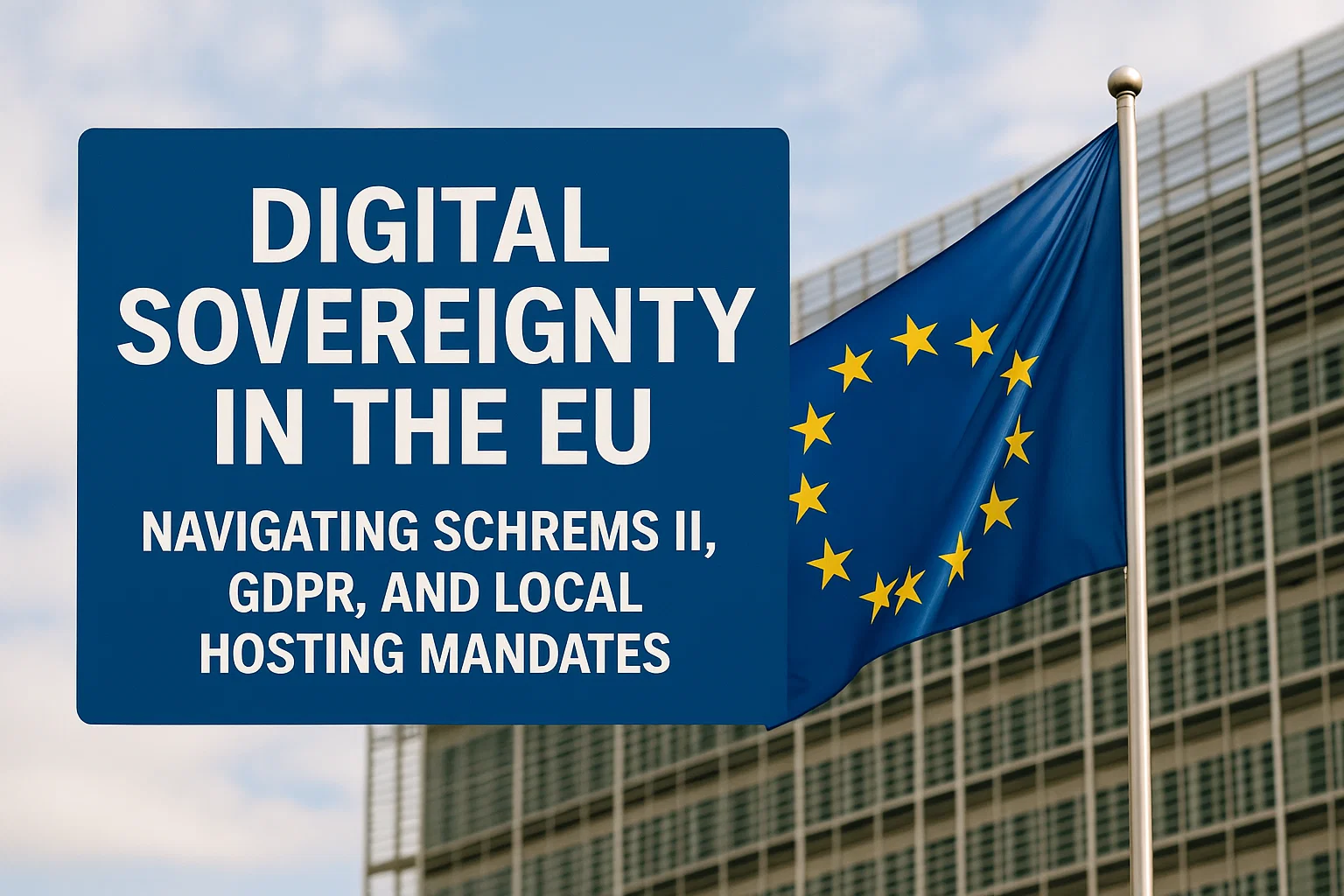Digital Sovereignty in the EU: Navigating Schrems II, GDPR, and Local Hosting Mandates
Keeping data compliant across borders

1 Introduction
European regulators have made it clear that storing personal data outside the EU can be a minefield. The Schrems II ruling invalidated the Privacy Shield framework and forced companies to rethink how they transfer data across borders. This article provides historical context, lays out the pros and cons of local hosting, and offers practical steps to achieve compliance without slowing innovation.
2 Understanding the Requirements
GDPR sets strict rules for protecting personal information. Under Schrems II, organizations must ensure that any country receiving EU data provides equivalent protections. Standard contractual clauses are one mechanism, but regulators increasingly push for local hosting within the EU to maintain control. Businesses must also be prepared for audits that verify data residency and security measures.
3 Strategies for Compliance
If you operate globally, consider regional data centers within EU borders. Cloud providers now offer “EU-only” regions to help meet sovereignty requirements. For smaller businesses, partnering with local hosting companies can also satisfy regulators while keeping costs manageable. The key is transparency—document where data lives and how it’s protected. Regularly review your supplier contracts to confirm compliance with GDPR and local regulations.
4 Balancing Innovation and Privacy
While compliance can seem restrictive, it doesn’t have to stifle innovation. By architecting applications to segregate personal data and using strong encryption, you can continue to serve users worldwide while respecting their privacy rights. In the long run, a commitment to digital sovereignty builds trust with customers and regulators alike.
5 Historical Background
The concept of digital sovereignty gained traction after revelations of mass surveillance programs in the early 2010s. EU lawmakers responded with strict privacy regulations culminating in GDPR. The 2020 Schrems II decision further heightened awareness by striking down data transfer agreements that lacked adequate safeguards. These events pushed European organizations to rethink how they share information with international partners.
6 Pros and Cons of Local Hosting
6.1 Pros
- Greater control over data residency and jurisdiction
- Improved latency for EU customers
- Easier to demonstrate compliance during audits
6.2 Cons
- Potentially higher costs compared to global cloud regions
- May complicate disaster recovery if infrastructure is concentrated in one geographic area
7 Actionable Tips
- Map data flows. Keep an up-to-date inventory of where personal data is stored and processed.
- Use strong encryption. Protect data both at rest and in transit to minimize the impact of unauthorized access.
- Review contracts. Ensure cloud providers and partners offer the safeguards required under GDPR.
- Consider hybrid approaches. Store sensitive information locally while using global regions for less critical workloads.
- Monitor regulatory updates. EU data rules evolve quickly, so schedule periodic reviews to adjust your policies as needed.
8 Conclusion
Staying on top of EU data regulations isn’t easy, but proactive planning keeps your operations running smoothly. By embracing transparency and strong security practices, you can meet sovereignty mandates without sacrificing your global ambitions. The key is to treat compliance as an ongoing process—one that evolves alongside your technology and business goals.
9 Real-World Example
Consider a multinational e-commerce company that moved its European user database from the US to an EU-based data center after the Schrems II ruling. By doing so, it avoided complex transfer agreements and reassured customers that their information stayed within EU jurisdiction. The move required investment, but the company reported shorter page-load times for European shoppers and a smoother audit process with local regulators.
10 Final Thoughts
Digital sovereignty is more than a legal checkbox; it reflects growing public interest in where data lives and who controls it. Organizations that plan carefully, document their practices, and communicate openly with customers can thrive in this environment. Treat compliance as part of your overall product strategy, and you’ll find that data protection becomes a competitive advantage rather than an obstacle. \nUltimately, following these guidelines positions your organization for long-term success in the European market while respecting user privacy. Staying compliant also builds trust with partners and consumers.